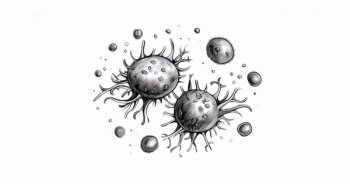
Polycythemia Vera Disease Burden
Harry Erba, MD, PhD:Polycythemia vera still remains a disease that is often cared for by community oncologists, and that’s why it’s so important for us to be able to discuss this disease. It’s a rare disease. For example, in our center at the University of Alabama at Birmingham, we see about 50 patients a year among the various hematologists who see the patients. That’s a fairly large patient load. In the community practice, there’s probably only a handful of these patients being seen every year.
The quality of life of these patients can be affected by a number of different pathophysiologic mechanisms. The splenomegaly can cause early satiety, and weight loss, and abdominal discomfort, pain in the left shoulder that is referred from the enlarging spleen, and splenic infarcts that occur over time. Patients can have constitutional symptoms and have fatigue and night sweats, with pruritus being among the more difficult. I’ve seen a number of patients referred to me who have seen a number of other physicians for itching without a rash and been given a number of different creams to help it go away, and it never did. I’ve seen night sweats attributed to menopausal symptoms in both men and women, only to find that the underlying disease process is a myeloproliferative neoplasm.
In terms of the actual effects of having an elevated hematocrit, patients can have major thromboembolic events, such as pulmonary emboli, myocardial infarctions, and strokes. They can also have unusual thrombotic events, such as Budd-Chiari syndrome. They could have microcirculatory events, such as migraines with auras, dizziness, tinnitus. Patients can have erythromelalgia, which is red painful hands or feet due to these microcirculatory problems.
Patients can present with any of those findings. Patients can present with findings related to splenomegaly. Patients can present with findings related to their blood counts, and specifically, thromboembolic events. So, for example, in the rare disorder, Budd-Chiari syndrome, which is hepatic vein thrombosis, up to 50% of patients have been shown to have the JAK2 V617F mutation at the time of diagnosis of Budd-Chiari syndrome. And so, patients with unexplained thromboembolic events should be screened for polycythemia vera since intervention is so important in that disorder. However, patients may present asymptomatic, and they may have a high hemoglobin or hematocrit that has been recognized on routine CBC and referred for further evaluation for that reason.
A Patient with Disease Progression on Hydroxyurea
Case 1:







































